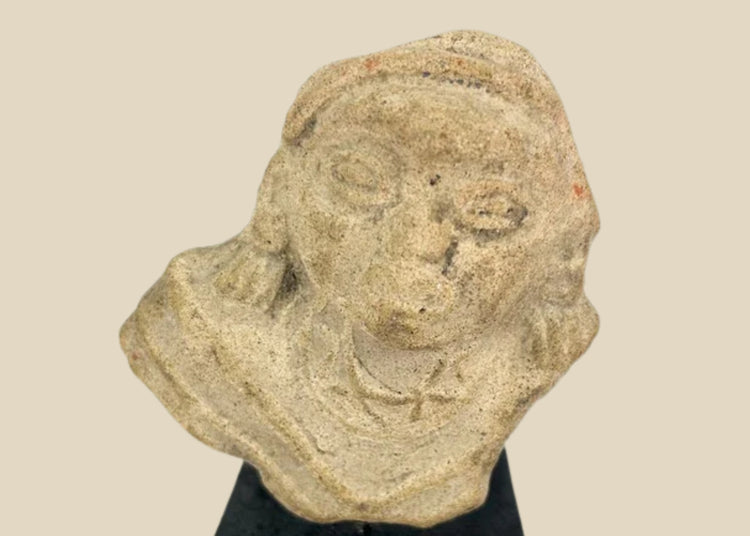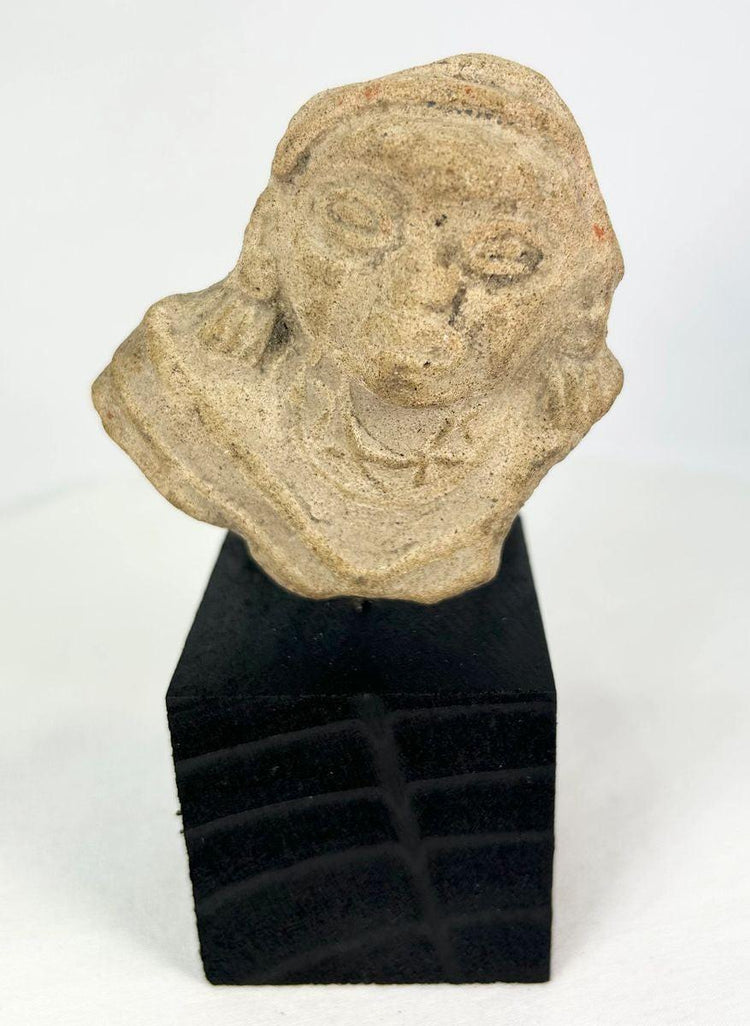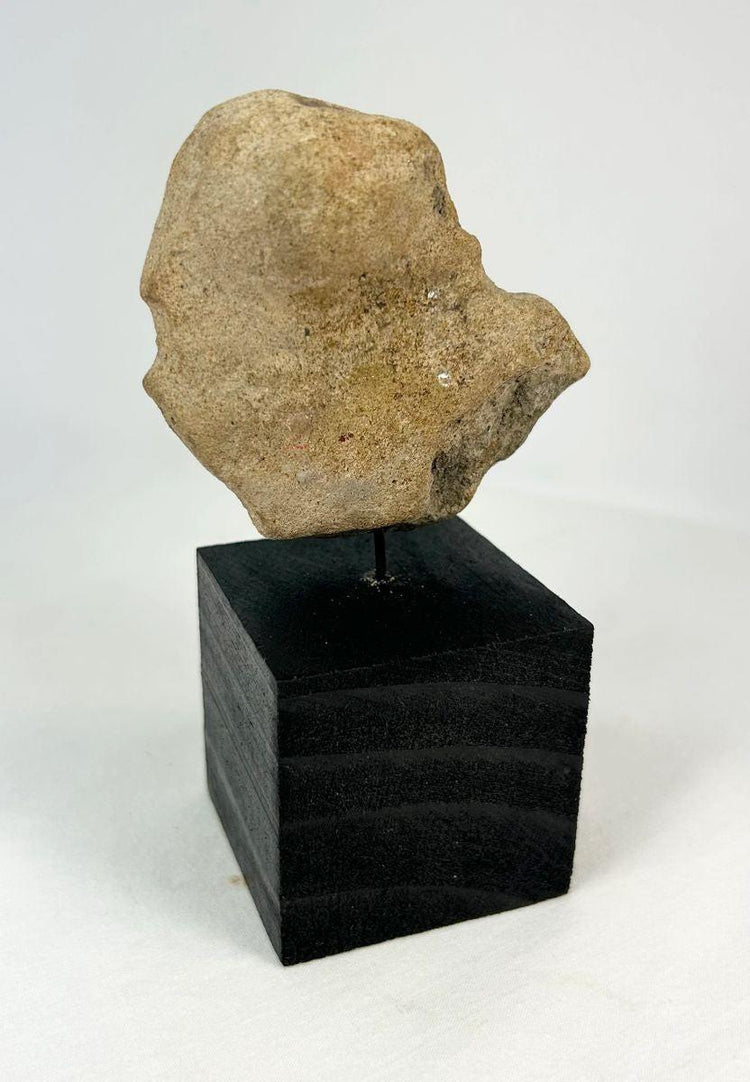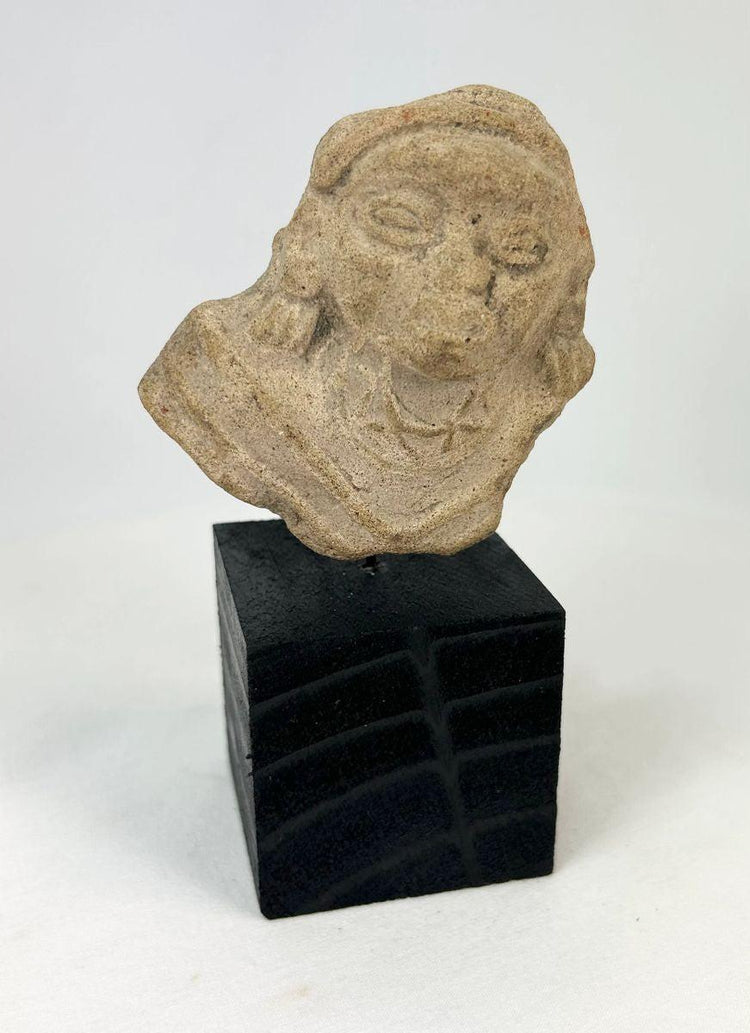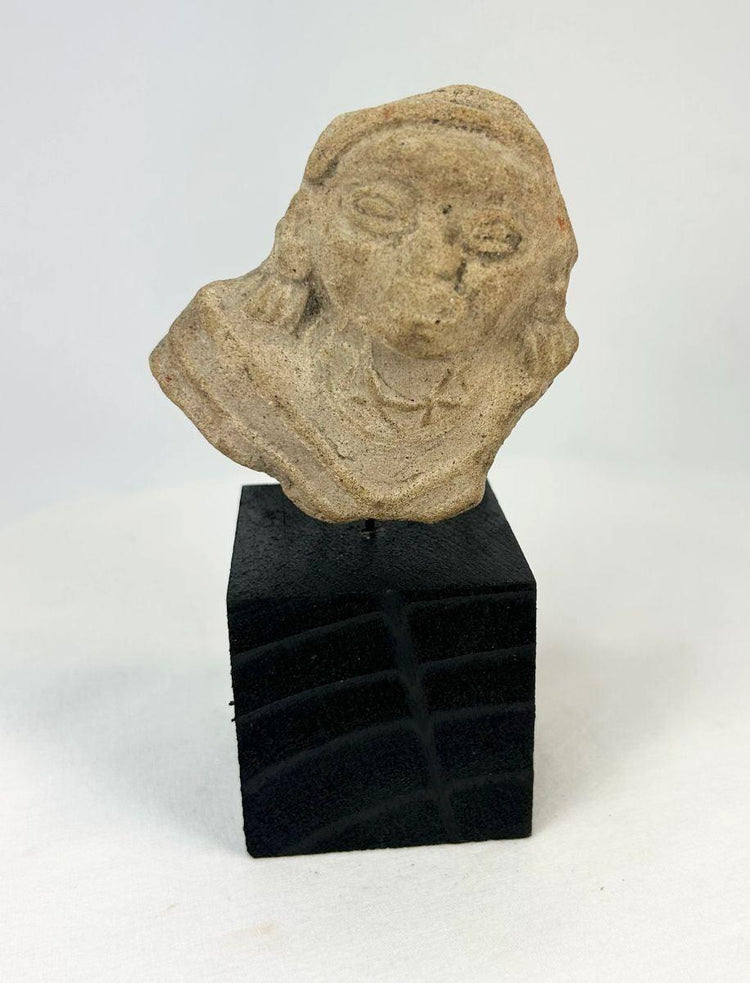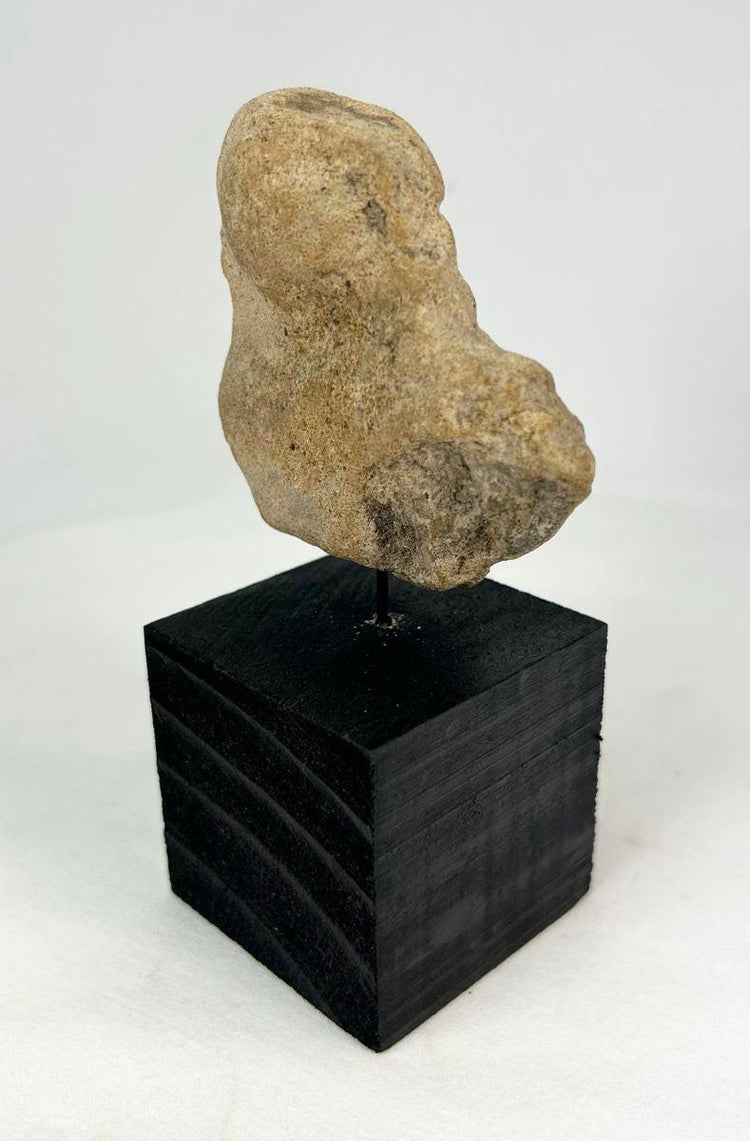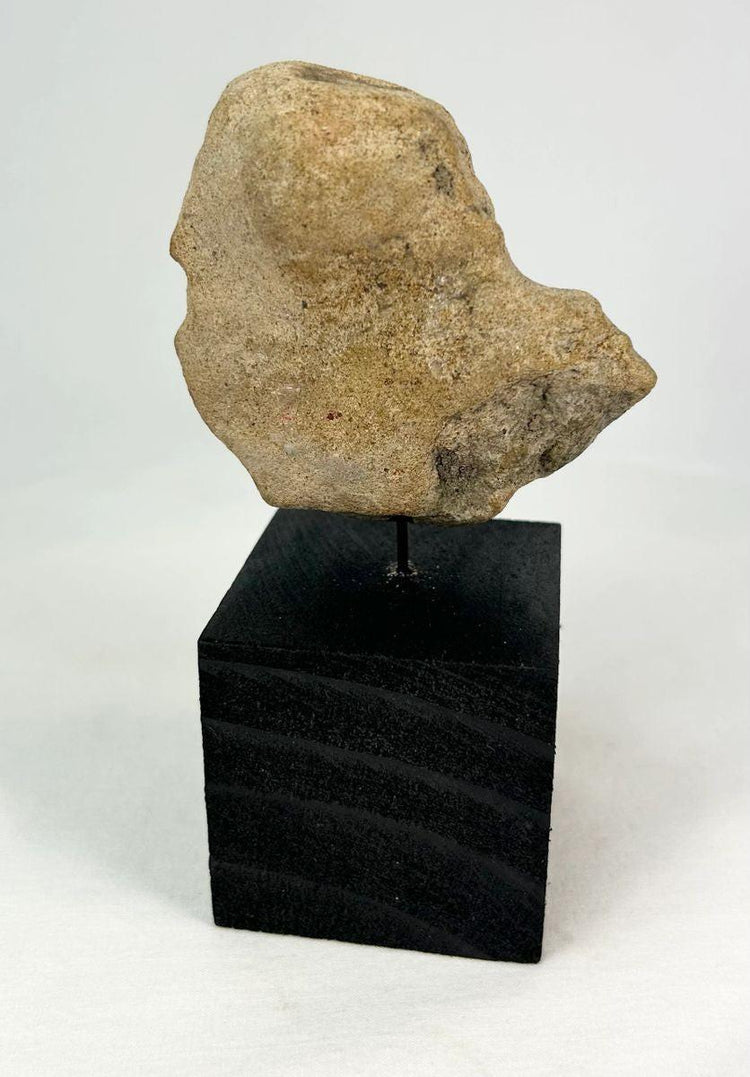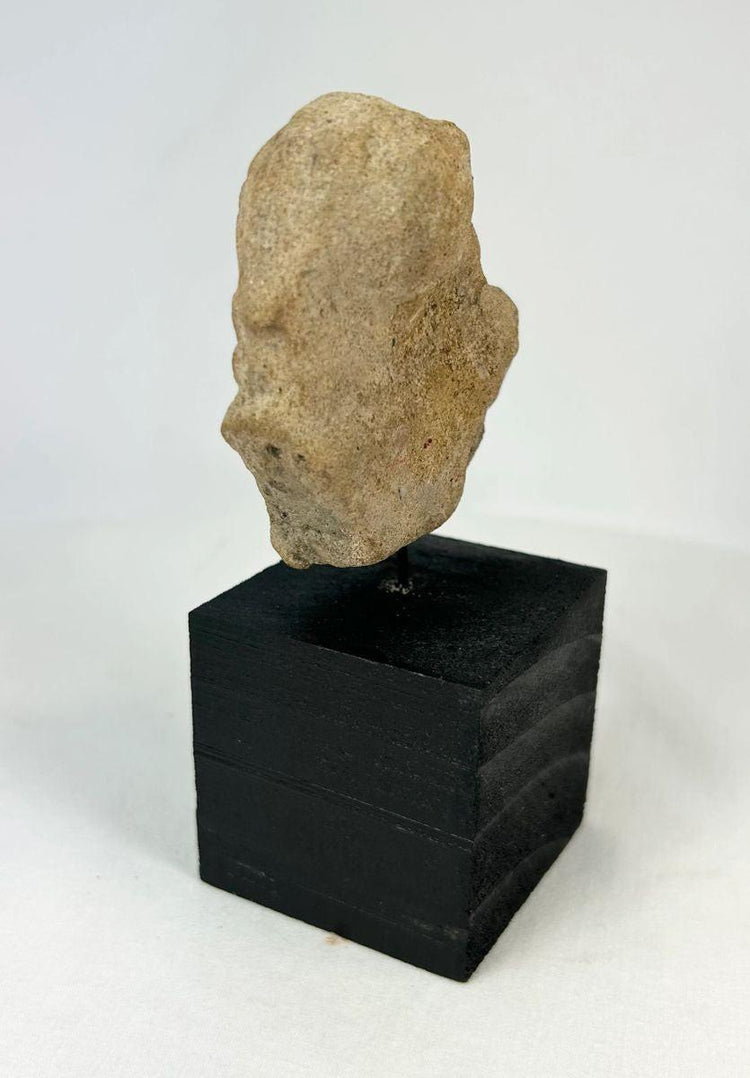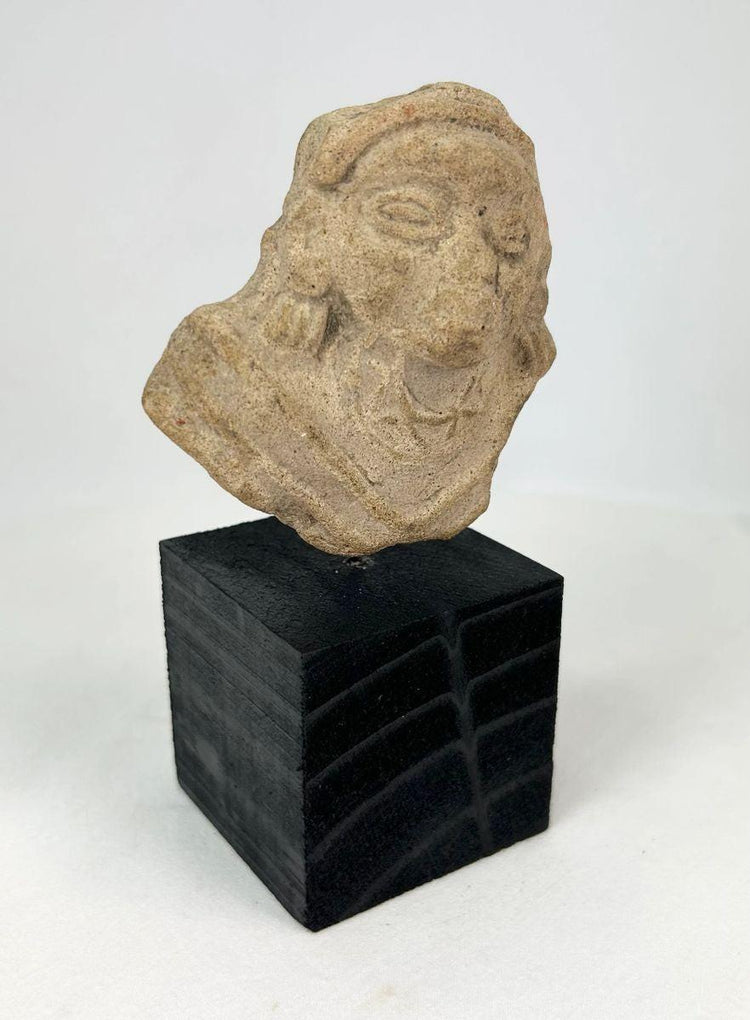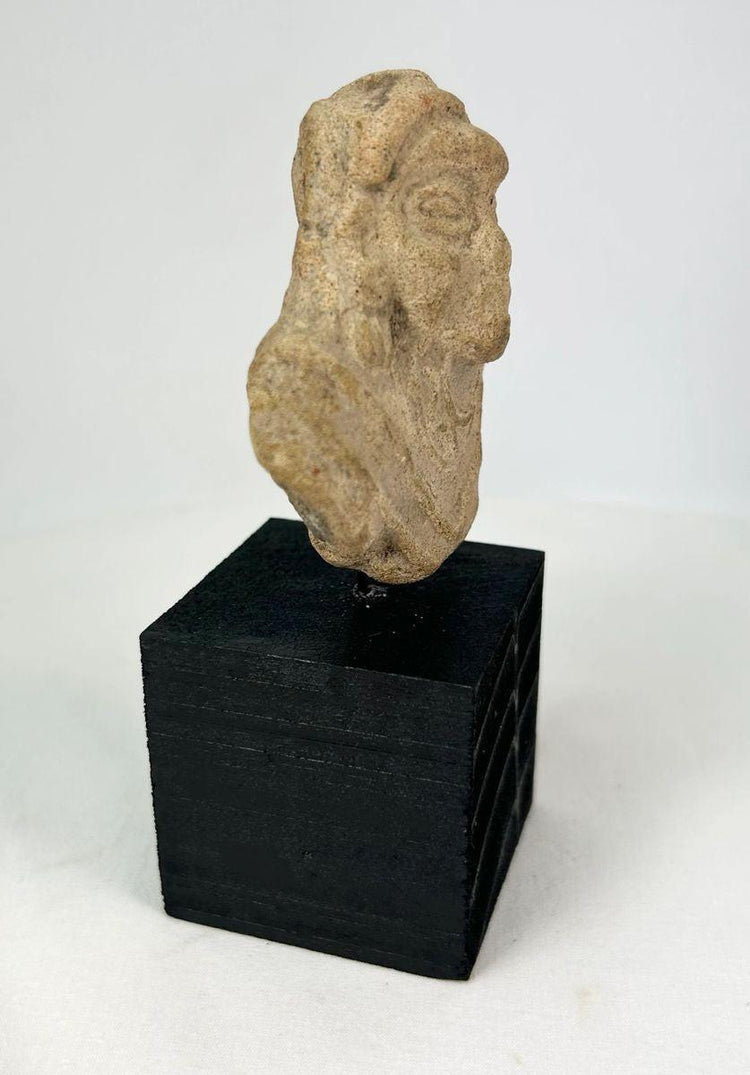Fragmento de figura de terracota antigua | Mesoamericano (Nayarit/Jalisco) o provincia romana | c. 200 a. C.–300 d. C.
Descripción
Más
Menos
Contexto histórico y origen
Región: Probablemente el oeste de México (Nayarit o Jalisco) o la Península Ibérica
Material: Terracota (arcilla cocida)
Periodo: Circa 200 a. C. – 300 d. C. (si es mesoamericano) o Circa siglo I a. C. – siglo II d. C. (si es provincial romano/ibérico)
Descripción
Este fragmento escultórico representa la parte superior de una figura antropomorfa estilizada, modelada en terracota. El rostro ancho presenta ojos almendrados, nariz prominente y labios entreabiertos, posiblemente en medio de un discurso o una canción. Se conservan restos de orejeras o tocado a los lados de la cabeza, con tenues detalles incisos que sugieren ropa drapeada o un patrón decorativo en el pecho. El reverso es tosco y sin labrar, lo que indica que originalmente estaba fijado a una vasija mayor, un elemento arquitectónico o una figura completa destinada a una exhibición funeraria o ceremonial. Actualmente se presenta en una peana moderna de estilo museístico.
Características
- Rostro humano estilizado con rasgos exagerados.
- Leves rastros de pigmentación o incrustaciones minerales.
- Terracota modelada a mano con detalles incisos para pliegues y adornos.
- Reverso sin trabajar, lo que indica unión a un objeto más grande.
- Montado sobre una base de madera personalizada con soporte de pasador central.
Importancia cultural
Tanto las tradiciones del oeste de México como las ibéricas/romanas emplearon figuras de terracota en contextos funerarios y rituales. A menudo representaban ancestros, deidades o figuras simbólicas, y se colocaban en tumbas o santuarios como ofrendas. Los rasgos abstractos de esta pieza sugieren asociaciones con máscaras ceremoniales, representaciones rituales u oraciones simbólicas. Fragmentos como este ofrecen una valiosa perspectiva de las tradiciones artísticas que equilibraban la abstracción con la narrativa cultural.
Condición
Buen estado arqueológico. Presenta pérdidas en la parte inferior y trasera. Meteorización superficial compatible con un enterramiento prolongado. Estable, sin desprendimiento activo. Montaje seguro.
Dimensiones (aproximadas)
Altura (con base): 5 pulgadas
Ancho: 2 pulgadas
Profundidad: 2 pulgadas
Edad
Alrededor de 200 a. C. - 300 d. C. (si es mesoamericano)
o
Alrededor del siglo I a. C. – siglo II d. C. (si es provincia ibérica/romana)
Descripción
Contexto histórico y origen
Región: Probablemente el oeste de México (Nayarit o Jalisco) o la Península Ibérica
Material: Terracota (arcilla cocida)
Periodo: Circa 200 a. C. – 300 d. C. (si es mesoamericano) o Circa siglo I a. C. – siglo II d. C. (si es provincial romano/ibérico)
Descripción
Este fragmento escultórico representa la parte superior de una figura antropomorfa estilizada, modelada en terracota. El rostro ancho presenta ojos almendrados, nariz prominente y labios entreabiertos, posiblemente en medio de un discurso o una canción. Se conservan restos de orejeras o tocado a los lados de la cabeza, con tenues detalles incisos que sugieren ropa drapeada o un patrón decorativo en el pecho. El reverso es tosco y sin labrar, lo que indica que originalmente estaba fijado a una vasija mayor, un elemento arquitectónico o una figura completa destinada a una exhibición funeraria o ceremonial. Actualmente se presenta en una peana moderna de estilo museístico.
Características
- Rostro humano estilizado con rasgos exagerados.
- Leves rastros de pigmentación o incrustaciones minerales.
- Terracota modelada a mano con detalles incisos para pliegues y adornos.
- Reverso sin trabajar, lo que indica unión a un objeto más grande.
- Montado sobre una base de madera personalizada con soporte de pasador central.
Importancia cultural
Tanto las tradiciones del oeste de México como las ibéricas/romanas emplearon figuras de terracota en contextos funerarios y rituales. A menudo representaban ancestros, deidades o figuras simbólicas, y se colocaban en tumbas o santuarios como ofrendas. Los rasgos abstractos de esta pieza sugieren asociaciones con máscaras ceremoniales, representaciones rituales u oraciones simbólicas. Fragmentos como este ofrecen una valiosa perspectiva de las tradiciones artísticas que equilibraban la abstracción con la narrativa cultural.
Condición
Buen estado arqueológico. Presenta pérdidas en la parte inferior y trasera. Meteorización superficial compatible con un enterramiento prolongado. Estable, sin desprendimiento activo. Montaje seguro.
Dimensiones (aproximadas)
Altura (con base): 5 pulgadas
Ancho: 2 pulgadas
Profundidad: 2 pulgadas
Edad
Alrededor de 200 a. C. - 300 d. C. (si es mesoamericano)
o
Alrededor del siglo I a. C. – siglo II d. C. (si es provincia ibérica/romana)
También te puede interesar






























